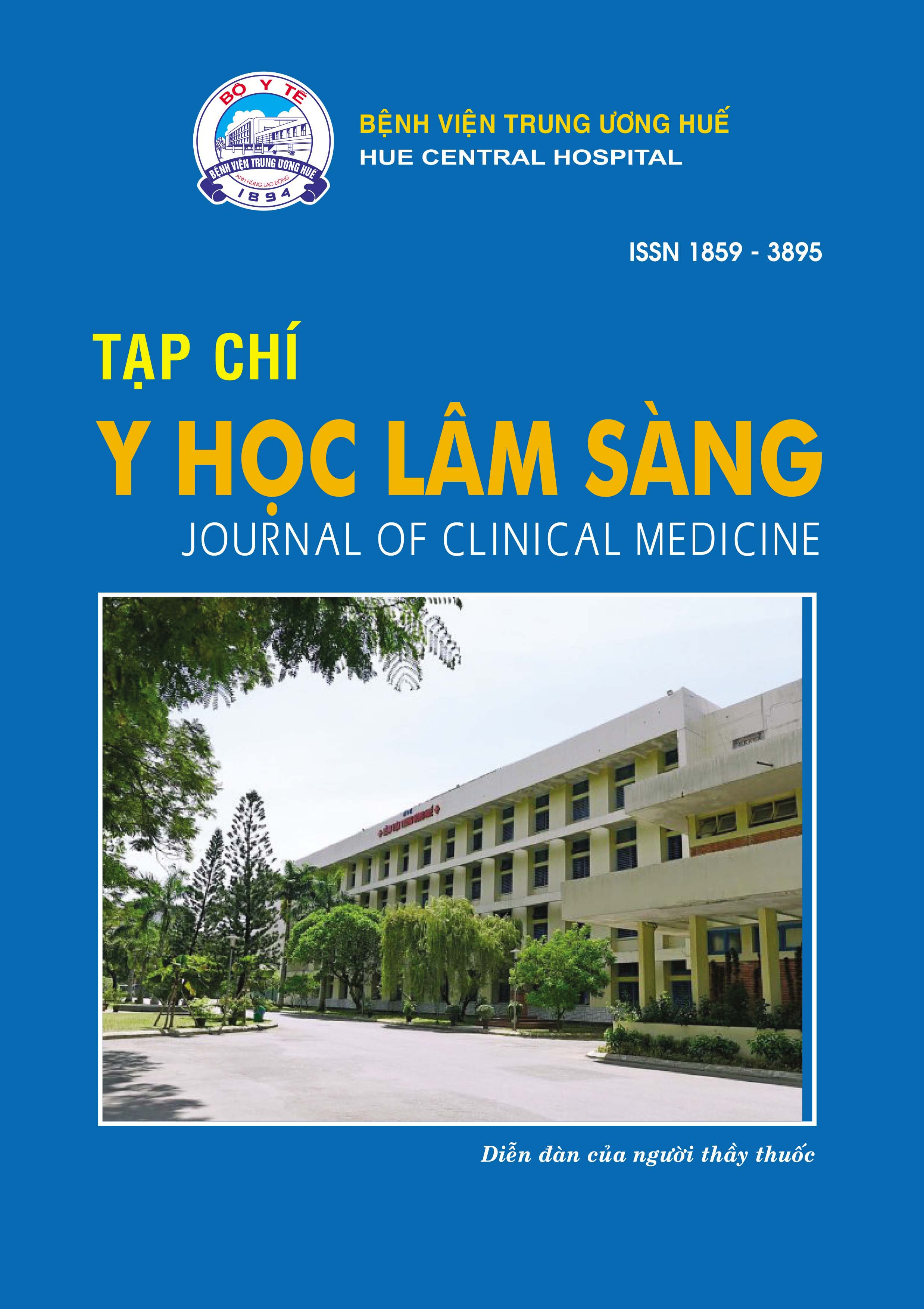Abstract
Background: Acute hyperglycemia on admission is common in acute myocardial infarction (AMI) patients regardless of diabetic status, and is known as one of prognostic factors. However there is limited evidence on the effect of acute hyperglycemia on non-diabetic patients. Our goal is to assess if admission hyperglycemia increases the risk for in-hospital adverse clinical events and mortality after AMI in nondiabetic patients.
Methods: We perform this cross-sectional study involving 128 AMI patients admitted to the Cardiovascular Emergency and Interventional Department at Hue Central Hospital between April 2017 and July 2018. We categorize patients according to their glucose levels at admission (<7,8; 7,8–11,0 and ≥11,1 mmol/L) and compare inhospital adverse clinical events and mortality across these admission glucose categories. We employ logistic regression to assess the differences in outcomes across admission glucose levels while adjusting for the same covariates.
Results: As compared to patients with admission glucose <7,8 mmol/L (70,3%), patients with admission glucose 7,8-11,0 mmol/L (23,4%, odds ratio OR = 2,09; 95% confidence interval CI [0,65-6,77]) and >11,1 mmol/L (6,3%, OR = 7,56; 95% CI [1,29-44,28]) are at elevated in-hospital adverse clinical events after adjustment for patients’ demographic characteristics and clinical status. Among non-diabetic patients with admission glucose 7,8-11,0 mmol/L (OR = 1,46; 95% CI [0,34-6,37]) and >11,1 mmol/L (OR = 7,82; 95% CI [1,39-43,90]) remain elevated risk for adjusted in-hospital mortality. In the multivariate analysis, an increment of 1 mmol/L in blood glucose on admission is associated with an increase in in-hospital adverse clinical events and mortality risk of 41% and 26%, respectively.
Conclusions: These findings underscore clinical significance of admission hyperglycemia on in-hospital adverse clinical events and mortality in non-diabetic AMI patients.
References
Nguyễn Văn Chi (2011), Nghiên cứu đặc điểm lâm sàng, hóa sinh và điều trị tăng đường huyết ở bệnh nhân nhồi máu cơ tim cấp, Luận án Tiến sĩ Y học, Trường Đại học Y Hà Nội, Hà Nội.
Nguyễn Văn Tân (2015), Nghiên cứu sự khác biệt về lâm sàng, cận lâm sàng và điều trị nhồi máu cơ tim cấp ở bệnh nhân trên và dưới 65 tuổi, Luận án Tiến sĩ Y học, Đại học Y Dược Thành phố Hồ Chí Minh, Hồ Chí Minh.
American Diabetes Association (2018), “2. Classification and Diagnosis of Diabetes: Standards of Medical Care in Diabetes-2018”, Diabetes Care, 41(Suppl 1), pp. S13-S27.
Chen P. C., Chua S. K., Hung H. F., et al. (2014), “Admission hyperglycemia predicts poorer short- and long-term outcomes after primary percutaneous coronary intervention for STelevation myocardial infarction”, J Diabetes Investig, 5(1), pp. 80-6.
Dong-bao Li, Qi Hua, Jincheng Guo, et al. (2011), “Admission Glucose Level and In-hospital Outcomes in Diabetic and Non-diabetic Patients with ST-elevation Acute Myocardial Infarction”, Internal Medicine, 50(21), pp. 2471-2475.
Dungan Kathleen M., Braithwaite Susan S., Preiser Jean-Charles (2009), “Stress hyperglycaemia”, The Lancet, 373(9677), pp. 1798-1807.
Ekmekci A., Uluganyan M., Tufan F., et al. (2013), “Impact of admission blood glucose levels on prognosis of elderly patients with ST elevation myocardial infarction treated by primary percutaneous coronary intervention”, J Geriatr Cardiol, 10(4), pp. 310-6.
Ishihara Masaharu (2012), “Acute Hyperglycemia in Patients With Acute Myocardial Infarction”, Circulation Journal, 76(3), pp. 563-571.
Kosiborod M., Rathore S. S., Inzucchi S. E., et al. (2005), “Admission glucose and mortality in elderly patients hospitalized with acute myocardial infarction: implications for patients with and without recognized diabetes”, Circulation, 111(23), pp. 3078-86.
Tomaszuk Kazberuk A., Kozuch M., Malyszko J., et al. (2012), “What level of hyperglycaemia on admission indicates a poor prognosis in patients with myocardial infarction treated invasively?”, Kardiol Pol, 70(6), pp. 564-72.
Thygesen K., Alpert J. S., Jaffe A. S., et al. (2018), “Fourth universal definition of myocardial infarction (2018)”, Eur Heart J.
Zhao S., Murugiah K., Li N., et al. (2017), “Admission Glucose and In-hospital Mortality after Acute Myocardial Infarction in Patients with or without Diabetes: A Cross-sectional Study”, Chin Med J (Engl), 130(7), pp. 767-775
| Published | 07-01-2025 | |
| Fulltext |
|
|
| Language |
|
|
| Issue | No. 67 (2021) | |
| Section | Original article | |
| DOI | 10.38103/jcmhch.2021.67.5 | |
| Keywords | Nhồi máu cơ tim cấp, Glucose máu nhập viện, Không đái tháo đường, Các biến chứng tim mạch, Tử vong Acute Myocardial Infarction, Admission glucose, Non-diabetic, Adverse clinical events, Mortality |

This work is licensed under a Creative Commons Attribution-NonCommercial-NoDerivatives 4.0 International License.
Copyright (c) 2021 Journal of Clinical Medicine Hue Central Hospital

